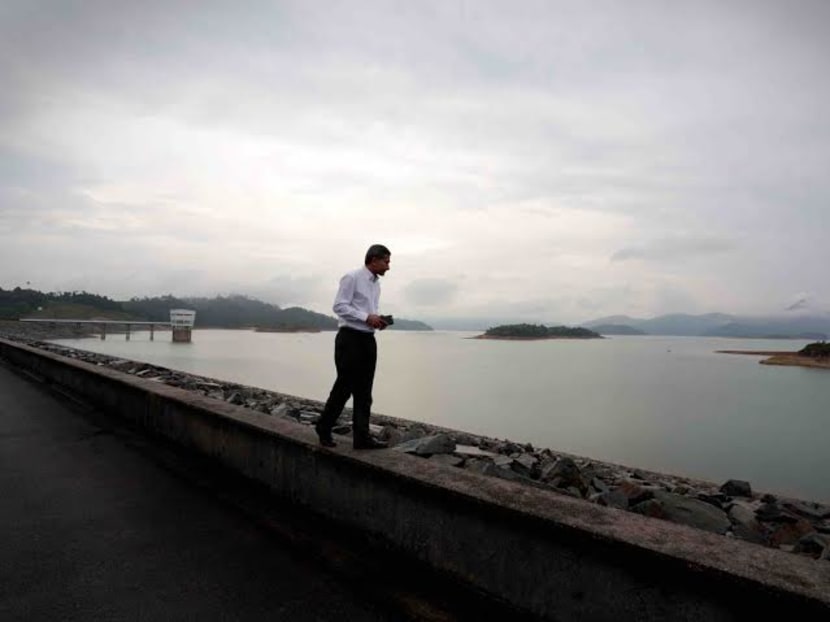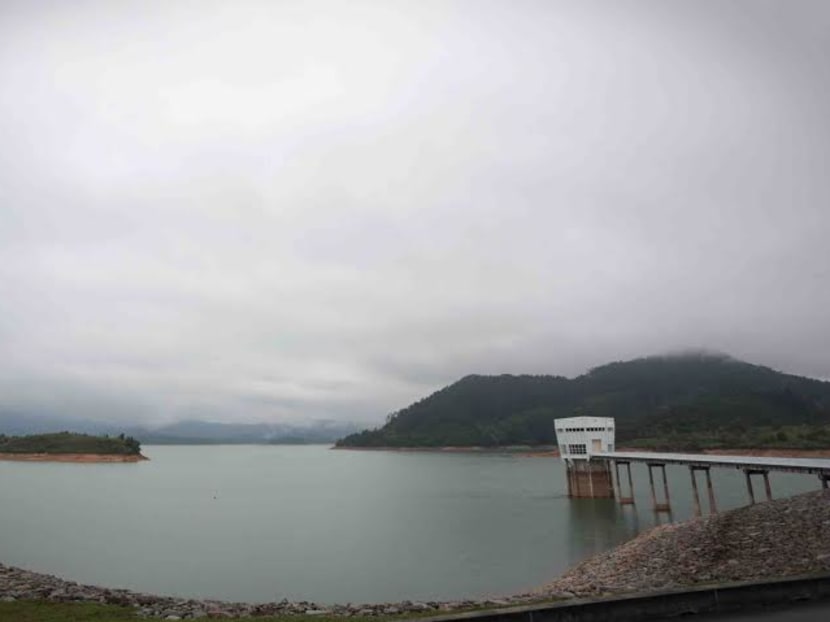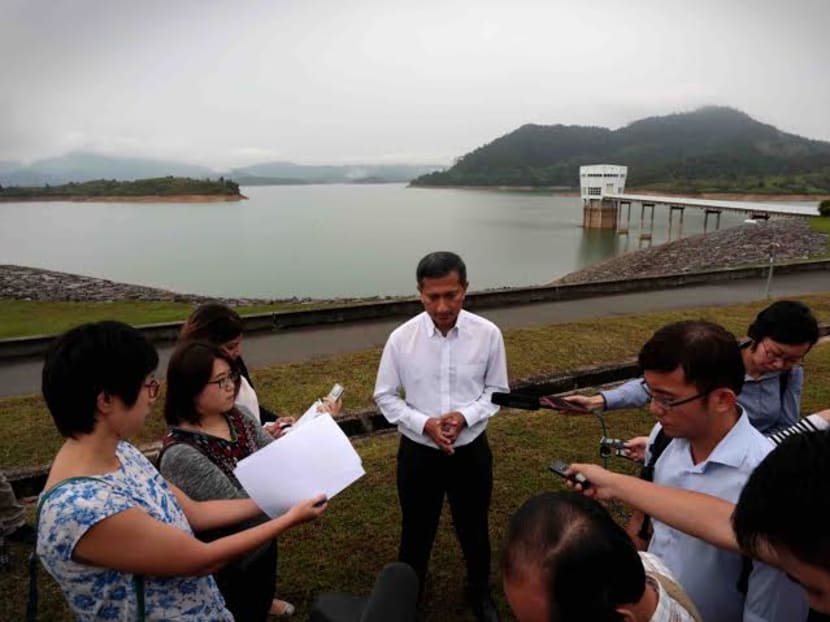Water supply from Johor ‘hit by dry weather’
JOHOR — With the reservoir that enables Singapore to reliably draw water from the Johor River at a historic low, Minister for the Environment and Water Resources Vivian Balakrishnan today (Aug 3) called on the public to save water and warned that restrictions could kick in if the situation worsens. These could include banning the unnecessary watering of plants or the running of water features for aesthetic reasons.



JOHOR — With the reservoir that enables Singapore to reliably draw water from the Johor River at a historic low, Minister for the Environment and Water Resources Vivian Balakrishnan today (Aug 3) called on the public to save water and warned that restrictions could kick in if the situation worsens. These could include banning the unnecessary watering of plants or the running of water features for aesthetic reasons.
The Linggiu Reservoir in Johor receded to about slightly more than half (54.5 per cent) of its capacity today (Aug 3), the lowest in its 20-year history. Water from the reservoir is released into the Johor River to prevent saltwater intrusion from the sea into the river, as salty water cannot be treated by the water plant further downstream. This enables Singapore to draw a maximum of 250 million gallons per day from the river allowed under the 1962 water agreement between Singapore and Malaysia.
Writing on Facebook, Dr Balakrishnan, who visited the reservoir today, noted that Singapore is in a “much stronger and secure position now” thanks to its investments in desalination and NEWater over the decades. However, it should never take things for granted, he said.
“Water has always been an existential issue for us since independence 50 years ago... We have to constantly be aware of potential problems and prepare well ahead of time,” Dr Balakrishnan said.
He added: “No other country has pursued water security with such a single minded focus on such a scale. Without these investments we would be in a very precarious position.”
The Johor River is Singapore’s source of imported water and supplies up to 60 per cent of Singapore’s daily water needs. Linggiu Reservoir’s levels have not recovered since the dry spell early last year and that has become a concern, said Dr Balakrishnan. The previous low was 63 per cent in May 2010. There have been 77 occasions this year where the PUB was temporarily unable to draw water from the river due to salinity intrusions caused by tide levels.
A new NEWater plant will be completed by next year and a third desalination plant will be completed in Tuas in 2017, boosting capacity by 80 million gallons per day. Desalination and NEWater are expected to meet up to 80 per cent of water demand in 2060. Speaking to reporters at the Linggiu Reservoir, he called these two “national taps” an insurance policy developed over the last two decades - they are “the reason why I can be concerned but not alarmed”, he added.
Singapore’s rainfall in the first half of this year was 25 per cent below average and PUB has also kept water levels at the Republic’s reservoirs high by running desalination and NEWater plants at almost full capacity, as another buffer.
Sufficient rain brought by the North East Monsoon at the end of the year could reverse the falling trend, said Dr Balakrishnan, who was at the reservoir today with PUB chief executive Ng Joo Hee and other officials. But the El Nino weather phenomenon predicted by weather experts could mean more dry weather for Singapore and Malaysia in the months ahead.
Water restrictions would be the next step if the situation worsens, but Dr Balakrishnan said water rationing is unlikely in the “foreseeable future”. “For now, all I’m asking for is water conservation,” he said.
Singapore has buffer capacity through desalination and water recycling, which can provide for up to 55 per cent of water needs.
The Linggiu Reservoir is built and operated by Singapore but owned by the State of Johor. It began operating in 1995 and is part of a 1990 agreement between both countries. The Johor River serves both Singapore and Johor and has a catchment area roughly twice the size of Singapore.
The Malaysian government is building a barrage across the Johor River to keep out saltwater intrusions during dry seasons and allow the full capacity of the river to be drawn even during dry spells. The Johor River Barrage is expected to be ready around March next year. But with climate change and more extreme weather, the reliable yield of the river will be affected.
Among other ways, households can save water by taking shorter showers and using water from the washing-machine rinse-cycle to flush the toilets and mop the floor, according to the PUB.









